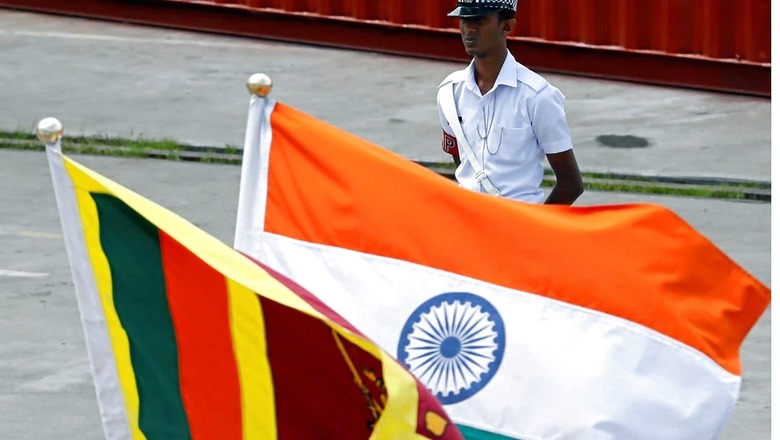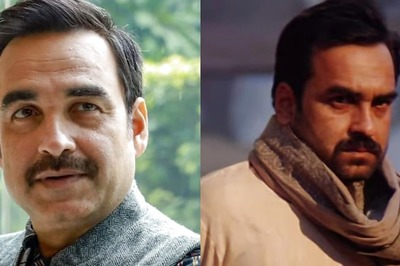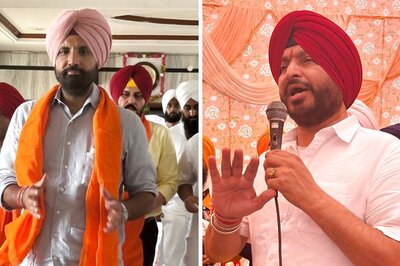
views
With China and the West paying mere lip service to the crisis-hit nation island nation, Sri Lanka finds itself receiving concrete financial support from no one but India. As foreign investments dried out, India emerged as the top lender to Sri Lanka, with assistance worth $3.8 billion during the course of this financial crisis in Sri Lanka. Meanwhile, assistance from China or even for that matter, the West, whose investments in Sri Lanka make up a large part of Sri Lanka’s external debt burden today, dwarves in comparison to the credit timely extended by India to Sri Lanka to pull it out of the crippling balance of payments crisis which has thrown the entire nation into financial mayhem and political chaos.
Chinese predatory lending has been widely discussed in the context of Sri Lanka’s problems today, but it is just part of the picture. While unfavourable Chinese loans, comprising 10% of Sri Lanka’s external debt, have contributed to white elephants and strategic compromises like the Hambantota Port, Colombo’s experience with Western lenders has not been rosy either. Reckless market borrowing, and almost 16 conditional bailouts from the International Monetary Fund (IMF) during previous balance of payment crises have also played a role in incapacitating the Sri Lankan economy in the long run. All of this was obviously not possible without the once mighty Rajapaksas who indulged in International Sovereign Bonds like there was no tomorrow. ISBs, which are instruments of capital market borrowing and slapped unfavourable rates above 6% burned a hole in Sri Lanka’s coffers. Colombo also agreed to pay them off in short periods of 5-10 years. In 15 years since Mahinda Rajapaksa became Prime Minister and was on his way to becoming President for a whole decade, Sri Lanka’s market borrowings shot up from 2.5% in 2005 to 56% of its total external debt in 2019.
Also Read: Why A Stable, Progressive, Peaceful Sri Lanka is in Best Interest of India’s National Security
2019 was the same year when his brother Gotabaya Rajapaksa was elected President, marking the return of the mighty Rajapaksas. But the mighty can also fall, and that’s what happened. President Gotabaya, with three of his brothers and two nephews in the ministerial cabinet, drove the nation off a cliff of mounting debt and landed straight into a sea of angry Sri Lankans out on the streets to deliver public retribution. They invaded the Presidential Palace, burnt down private residences of political leaders and sent the president packing in a staggering show of cowardice. Gotabaya Rajapaksa scrambled to leave his country and find a safe haven abroad but China had long dumped the Rajapaksas, and for that matter, the thought of bailing the island nation out. Meanwhile, the US refused Gotabaya a visa, India shrugged him off, the Maldives kept him temporarily and then drove him out and Singapore, from where Gotabaya finally shot off his resignation via mail, is also asking him to get out.
The Lesson for Sri Lanka
Dynasty politics laced with unbridled corruption is a lethal combination that ravages nations like an aggressive cancer. Sri Lanka has been no stranger to this. This particular dynasty took a turn for the worse. Since he came to power in 2019, Gotabaya’s government accelerated the economy’s doom by declaring mindless tax cuts that debilitated the treasury and a chemical fertiliser ban that debilitated the farmers. Then came the pandemic which dried out revenues through tourism, followed by the war in Europe in 2022 which was the final blow to the island nation.
For the longest time after the end of the civil war, the Rajapaksas led by Mahinda Rajapaksa served as China’s puppets in Sri Lanka. China was the new talk of the town as it sought to make inroads into the Indian Ocean region with an eye on India. It was here that the ruling political class may have overestimated Sri Lanka’s value to China, especially as India reacted sharply to the Hambantota fiasco resulting from the Chinese debt trap. Sri Lanka’s capability of playing both sides was leveraged far more than its potential. Clearly, that gamble did not pay off as this time around, China deserted Sri Lanka, while insisting that it enter an unfeasible free trade deal with it, blocked assistance of $1.5 billion in an existing credit line, did not help the Rajapaksas save their name and clearly wrote off any chance of letting Gotabaya Rajapaksa enter China when fleeing Lanka.
Also Read: India’s Response to Sri Lankan Crisis is Sign of a Rising and Assertive India
In fact, some of China’s staunchest puppets and powerbrokers around the world should know how easily they can be discarded by Beijing. China’s interest in Sri Lanka seems to have evaporated as tensions with India at the Himalayan border and the resultant backlash from New Delhi keep it busy navigating through the apparent freeze in ties with a market of 1.3 billion people. Even if that were not the case, China is known to have dumped Mahinda Rajapaksa in the past after he was thrown out of power, and would not put its money on a leader who is being flailed right, left and centre. And again, pressing for a free trade deal that Gotabaya Rajapaksa, having already thrown the country into turmoil, saw through, was China pushing its luck with an all-or-nothing stance. So it never really gave up its predatory behaviour and is not expected to in the future. But for now, Sri Lanka has outlived its utility for China and so have the Rajapaksas.
Another lesson is from the reckless market borrowing from Western institutions that are now in a position to sue Colombo for defaulting. In January this year, the government paid off a $500 million sovereign bond even as the forex crisis was already unfolding and after India had announced a loan of $900 million. With no grace period awarded to Sri Lanka by these Western institutions even when its economy was on the verge of collapse, subsequent governments in Colombo should be mindful of the island nation’s other debt trap which the Rajapaksas threw it into.
India, on the other hand, has dispatched shipments of fuel, food and fertiliser to its southern neighbour and kept its supplies from drying up entirely. The Sri Lankan people’s opinion of India is expected to improve as they as shun their reservations often fuelled by history and politicians with opposing interests. After all, India stuck around during Sri Lanka’s darkest hour, even as others fled the scene.
Read all the Latest News, Breaking News, watch Top Videos and Live TV here.


















Comments
0 comment